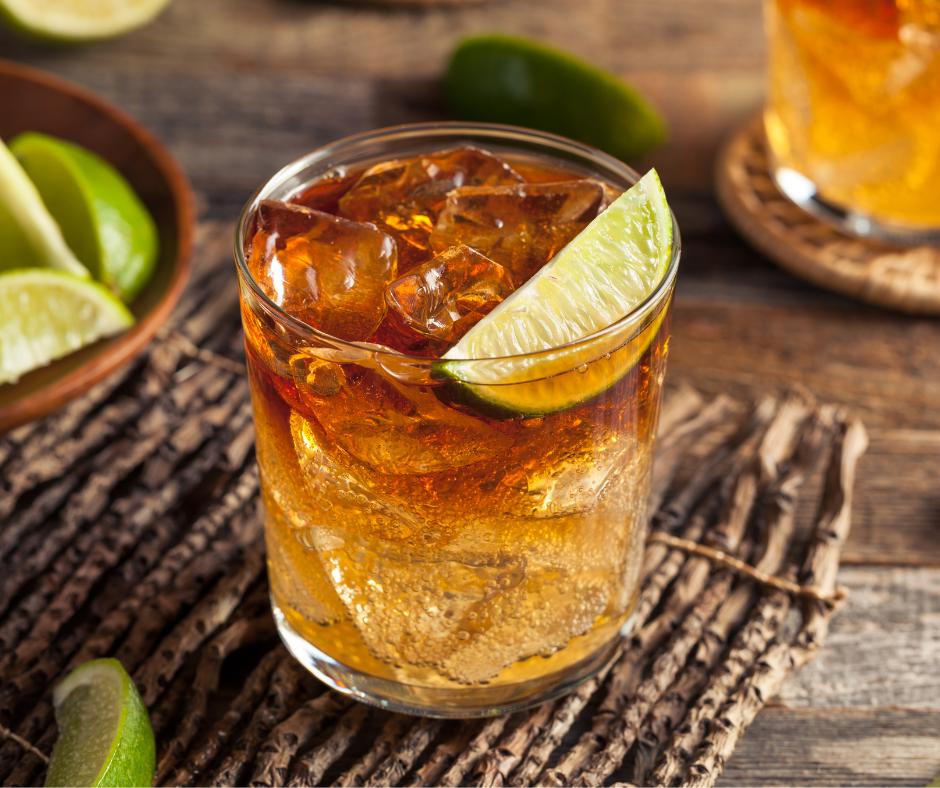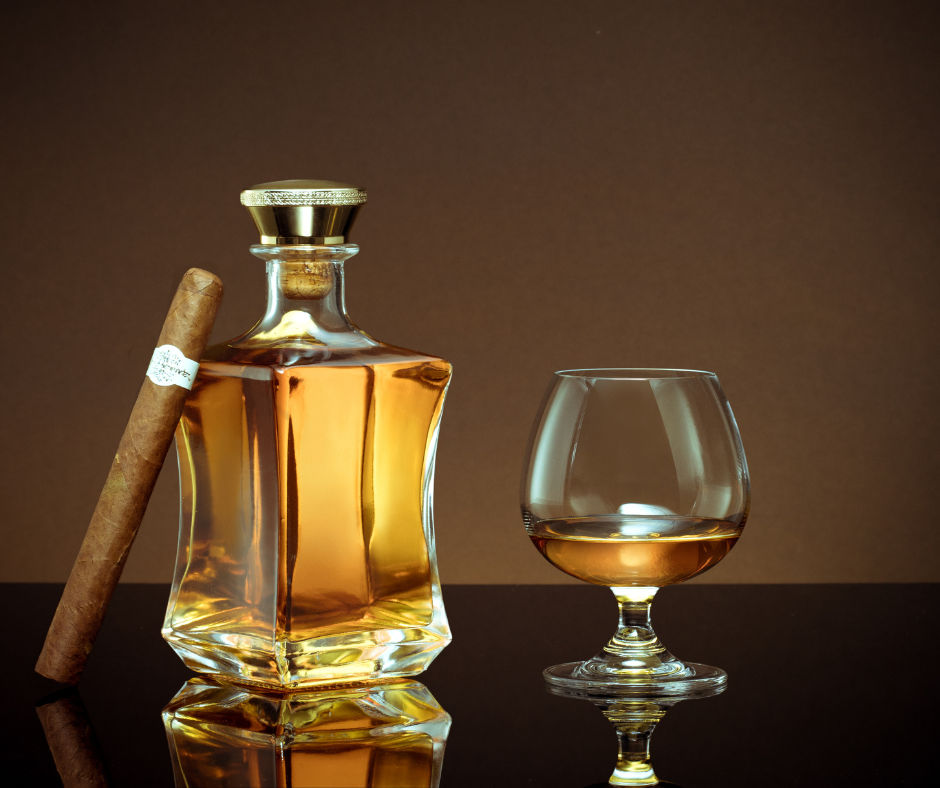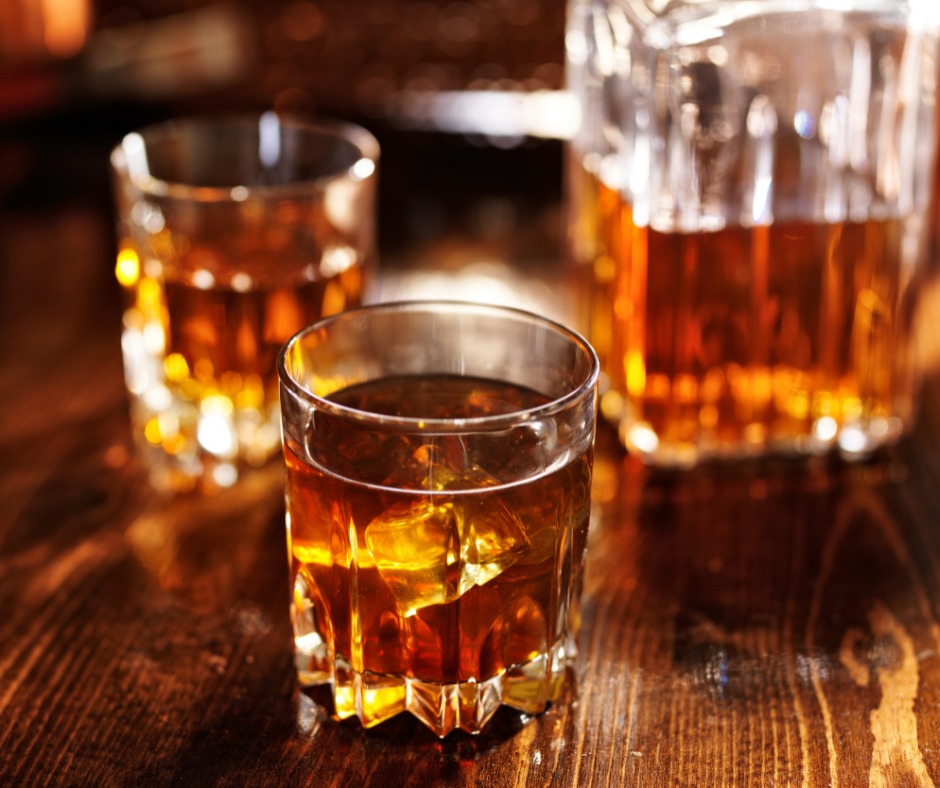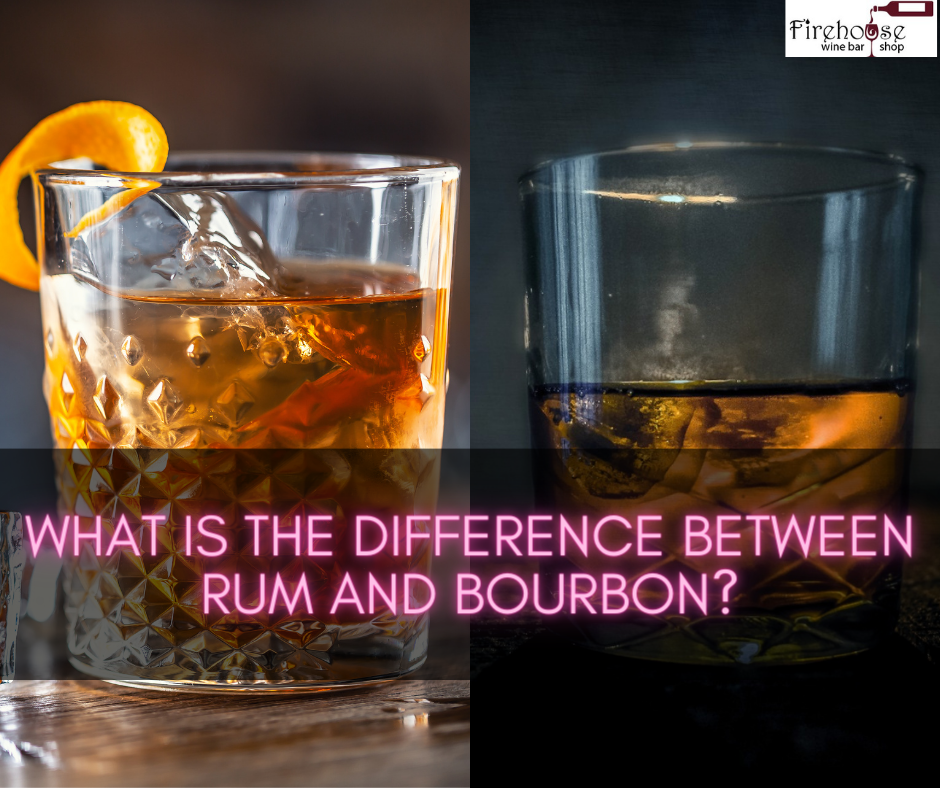Introduction
Understanding the differences between rum and Bourbon is essential for any liquor enthusiast. Although both spirits have gained popularity in recent years, they have distinct characteristics that set them apart. This blog section will explore ‘What Is the Difference Between Rum and Bourbon?‘, comprehensively comparing their ingredients, distillation processes, and flavor profiles. So, whether you’re a rum aficionado or a bourbon lover, read on to discover the unique qualities that distinguish these two beloved spirits.
Importance Of Understanding The Differences Between Rum And Bourbon
While rum and Bourbon may share a sweet taste profile, it’s crucial to recognize their disparities. By understanding the distinct characteristics of rum and Bourbon, you can make informed choices when selecting drinks, crafting cocktails, or expanding your home bar collection. Whether you prefer the tropical notes of rum or the Americana charm of Bourbon, knowing the key differences will help you refine your palate and appreciation for these spirits.
Brief Overview Of Rum And Bourbon
Rum is a distilled liquor made primarily from sugar cane and its byproducts, such as molasses and cane juice syrup. It is famous for its tropical flavors and is a staple in many cocktails. As rum does not have strict regulations or a protected country of origin, it comes in various styles and flavors, offering a wide range of choices for enthusiasts.
On the other hand, Bourbon is a uniquely American spirit that must meet specific criteria to qualify as such. It is predominantly made from corn, with a minimum requirement of 51% corn in the mash bill. Bourbon is known for its rich and robust flavors, often showcasing vanilla, caramel, and oak notes.
Here’s a quick comparison of the main differences between rum and Bourbon:
| Aspect | Rum | Bourbon |
|---|---|---|
| Main Ingredient | Sugar cane and byproducts | Corn |
| Regulations and Rules | None | Strict criteria in the US |
| Country of Origin | Produced worldwide | Primarily in the US |
| Distillation Process | Variable | Pot stills, column stills, repeated distillation |
| Aging | Oak barrels, various durations | Oak barrels, a minimum of two years for straight Bourbon |
Now that we’ve given you an overview of rum and Bourbon, the next blog section will delve deeper into their histories, production processes, and flavor profiles. Stay tuned to learn more about these captivating spirits!

Production Process
When exploring ‘What Is the Difference Between Rum and Bourbon?’, it’s essential to understand their production processes, as they play a significant role in the characteristics and flavors of each spirit.
Rum Production Process (fermentation, Distillation, Aging)
The rum production process begins with sugar cane molasses, a byproduct of sugar production. The molasses can be further processed into three primary forms:
- Cane juice: Must be used immediately after crushing.
- Cane syrup: Cane juice with substantial amounts of water removed.
- Molasses: Cane juice from which a substantial amount of water and sucrose has been removed.
Most rum is made from molasses, making it less expensive and easier to store and transport. However, some rum producers also use cane juice, which expresses local terroir and produces unique flavors.
The fermentation process for rum is relatively short, usually lasting a day or two, although some rums may ferment for longer periods, resulting in a more flavorful and funky profile. Whether cultured or wild, Yeast converts the molasses sugar into alcohol and flavor compounds, such as esters.
After fermentation, rum undergoes distillation, which can be done using various methods, including pot stills, column stills, or a combination of both. This process helps separate the alcohol from impurities, creating a high-proof spirit.
Once distilled, rum is often aged in oak barrels or other wooden casks to develop its flavors and mellow any harsh notes. The aging process can vary significantly depending on the type of rum and the desired characteristics.
Bourbon Production Process (mash Bill, Distillation, Aging)
On the other hand, Bourbon is a specific type of whiskey that must meet certain legal requirements to be considered Bourbon. These requirements include:
- Mash bill: Bourbon must be produced from a mash bill containing at least 51% corn. The remaining portion includes other grains like barley, wheat, or rye. The grains are milled and cooked to convert starches into fermentable sugars.
- Distillation: Bourbon is typically distilled using column stills, although some smaller producers may also utilize pot stills. The distillation process separates the alcohol from other unwanted compounds, producing a high-proof spirit.
- Aging: One of the iconic characteristics of Bourbon is its aging process in new, charred oak barrels. Bourbon must be aged in these barrels for at least two years to be legally called Bourbon. The aging process imparts flavors and smoothness to the Bourbon over time.
The aging process for Bourbon is complex, as it involves the interaction between the spirit and the wood, resulting in caramel, vanilla, and spice flavors commonly associated with Bourbon. Each barrel’s unique characteristics contribute to the overall flavor profile.
Overall, rum and bourbon production processes differ significantly, from the raw materials used to fermentation, distillation, and aging methods. These differences contribute to each spirit’s distinct flavors and characteristics, making them stand out in distilled beverages.
Ingredients
Sugarcane Vs. Corn As Base Ingredients
There is a stark difference when it comes to the ingredients used in the production of rum and Bourbon. Rum is made primarily from sugarcane juice, molasses, or honey. On the other hand, Bourbon is made from corn.
Rum derived from sugarcane gives it a distinct sweet and tropical flavor profile. Using sugarcane or its byproducts gives rum a unique and fruity taste that sets it apart from other liquors. Bourbon, on the other hand, has a rich and robust flavor due to its corn base. The high corn content in Bourbon gives it a sweeter and warmer taste.
Impact Of Ingredients On Flavor Profiles
The choice of ingredients in rum and Bourbon greatly influences the flavor profile of each liquor.
Rum, with its sugarcane base, offers a wide range of flavor varieties. From light and fruity to rich and complex, the flavors in rum can vary significantly depending on the region of production and the specific ingredients used. This makes rum one of the most varied liquors on the market, offering diverse flavors to suit different preferences.
Bourbon, on the other hand, has a more limited flavor profile compared to rum. The predominant use of corn as the base ingredient gives Bourbon a distinctive sweetness and a smooth finish. The high corn content contributes to bourbon’s warm and rich flavors, such as caramel, vanilla, and oak.
In conclusion, the difference in ingredients between rum and Bourbon plays a significant role in shaping their flavor profiles. While rum offers a wide variety of flavors due to its sugarcane base, Bourbon has a more focused and consistent flavor profile thanks to its use of corn. Whether you prefer the tropical and fruity notes of rum or the sweet and rich flavors of Bourbon, both liquors offer unique taste experiences for enthusiasts.

Flavor Profiles
Describing The Flavors Of Rum
Rum is known for its tropical and fruity flavors that transport you to the Caribbean islands. Depending on the type of rum, there are two basic flavor categories: white and dark.
White rum: Made from sugar cane juice and sugar cane syrup, white rum has a lighter taste with a dry finish. It offers sweet cane notes combined with the flavors of plants, providing a grassy undertone.
Dark rum: Aged for a longer period (typically 3-5 years) and with molasses as the heavier base, dark rum offers a more complex flavor profile. It features tropical fruit notes such as bananas and coconuts and hints of caramel, chocolate, dried fruits, and vanilla. The aging process also imparts the smoky and molasses flavors from the barrels.
Describing The Flavors Of Bourbon
On the other hand, Bourbon has a distinct flavor profile that is sweet compared to other variations of whiskey. The primary flavors of Bourbon come from the base grain used and the required aging process.
The combination of corn mash and charred white oak barrels gives Bourbon its signature taste. You can expect to experience rich caramel, vanilla, and oak notes. However, distillers can add other grains to alter the flavor slightly, making Bourbon a versatile spirit. For example, adding rye to the mash introduces warm and spicy flavors, while wheat brings a sweeter profile. The length of aging also affects the taste, resulting in lighter or heavier bourbons.
Whether enjoyed neat or on the rocks, Bourbon offers a range of flavor possibilities that can be further explored and enjoyed in mixed drinks.
Rum and Bourbon have distinct flavor profiles catering to different preferences. Rum tends to taste tropical and fry, while Bourbon offers a sweeter and more complex flavor profile. Understanding these nuances can help you appreciate the unique characteristics of each spirit and make informed choices when selecting your preferred beverage.
[Photo credit: Clay Banks via Unsplash]
Aging And Maturation
When it comes to producing rum and bourbon, one factor that sets them apart is the aging and maturation process.
Aging Process For Rum
Rum: The aging process for rum can vary depending on the specific type and brand. In general, rum is aged in oak barrels, which gives it a slightly woody flavor with hints of caramel and vanilla. However, some rums are sold unaged or only lightly aged, allowing the sweet and vibrant flavors of the sugarcane to shine through. The time spent aging gives rum its distinct flavor profile and character.
Aging Process For Bourbon
Bourbon: The aging process for Bourbon is a crucial step in its production. Bourbon must be aged in new charred oak barrels, typically for at least two years. The charring of the barrels caramelizes the sugars in the wood, imparting a smoky flavor characteristic of Bourbon. The aging process allows the whiskey to develop its unique flavor and color. Furthermore, the hot summers and cool winters in Kentucky, where many bourbons are distilled and aged, contribute to greater temperature variation within the barrels, adding complexity to the final product.
Here’s a table summarizing the aging processes for rum and Bourbon:
| Type | Rum | Bourbon |
|---|---|---|
| Aging | Variable (usually in oak barrels) | Minimum of two years in new charred oak barrels |
| Flavor | Woody with hints of caramel and vanilla | Smoky with hints of butterscotch and spice |
| Color | Varies depending on the aging | Amber to deep mahogany |
| Maturation | Often lightly aged or unaged | Essential for flavor development |
Overall, the aging and maturation processes play a vital role in the distinctive characteristics of both rum and Bourbon. Rum’s flavor is influenced by the use of oak barrels and the sweetness of sugarcane, while Bourbon’s smoky and rich flavors are derived from aging in charred oak barrels. Understanding these differences can help you appreciate the unique qualities of each spirit.

Regional Differences And Traditions
When distinguishing the characteristics of rum and Bourbon, understanding their regional differences and traditions is crucial. Both spirits have unique production methods and flavor profiles that are influenced by where they are made.
Different Styles Of Rum From Various Regions
Rum is a distilled product made from fermented sugar cane molasses or juice. The variations in production methods and the regions where rum is made result in various flavor profiles. Here are some examples of different styles of rum from various regions:
- Caribbean Rum: Caribbean rum is known for its tropical and fruity notes. Jamaica, Barbados, and Martinique islands produce rums with distinct flavors influenced by the local sugar cane and unique fermentation and distillation processes.
- Spanish-style Rum: Spanish-style rum, also known as Ron, is produced in countries like Puerto Rico and the Dominican Republic. These rums are typically light and smooth, with subtle notes of vanilla and caramel.
- French Rhum Agricole: Rhum Agricole is a type of rum produced in the French Caribbean islands, particularly Martinique. It is made from fresh sugar cane juice instead of molasses, resulting in a grassy and vegetal flavor profile.
- English-style Rum: English-style rum is commonly produced in countries like Guyana, Jamaica, and Trinidad. These rums are often full-bodied and rich, with notes of tropical fruits, spices, and molasses.
Regional Variations In Bourbon Production
Bourbon is an American whiskey that must meet specific legal requirements to be considered Bourbon. Regional variations in bourbon production contribute to the different characteristics and flavors of the spirit. Here are some notable regional variations:
- Kentucky Bourbon: Kentucky is often associated with Bourbon due to its historical significance and the state’s vast majority of bourbon production. Kentucky bourbon is known for its rich and full-bodied flavor profile, with caramel, vanilla, and oak notes.
- Tennessee Whiskey: While Tennessee whiskey is technically a bourbon type, it has a distinct production process. Like the famous Jack Daniel’s, Tennessee whiskey undergoes the charcoal filtering method known as the Lincoln County Process, giving it a unique smoothness and flavor.
- Other American Whiskeys: Bourbon can be produced in any state in the United States, but notable distilleries outside of Kentucky produce exceptional Bourbon. States like Texas, New York, and Colorado have bourbon distilleries, each offering regional character and flavor profiles.
Understanding the regional differences and traditions associated with rum and Bourbon can deepen your appreciation for these spirits. Whether you prefer the tropical flavors of Caribbean rum or the rich complexity of Kentucky bourbon, exploring the world of rum and Bourbon allows you to savor the unique characteristics of each liquor.
Cocktails And Pairings
Regarding cocktails, rum and Bourbon each bring unique flavors and characteristics. Here are some classic cocktails and food pairings to help you fully appreciate the differences between the two spirits.
Classic Rum-based Cocktails
Rum is known for its tropical and sweet flavors, making it a staple in many refreshing cocktails. Here are some popular rum-based cocktails to try:
- Mojito: Made with rum, fresh lime juice, mint leaves, sugar, and soda water, the Mojito is a classic Cuban cocktail perfect for summer.
- Piña Colada: This creamy and fruity cocktail combines rum, pineapple juice, and coconut cream to taste the tropics in a glass.
- Daiquiri: A simple yet delicious cocktail, the Daiquiri consists of rum, lime juice, and simple syrup. It can be served frozen or shaken with ice.
Classic Bourbon-based Cocktails
Bourbon’s smoky and rich flavors are often highlighted in classic cocktails. Here are a few popular bourbon-based drinks:
- Old Fashioned: The Old Fashioned is a timeless cocktail with Bourbon, sugar, and bitters. It is typically garnished with an orange peel and a cherry.
- Mint Julep: An iconic cocktail of the American South, the Mint Julep is made with Bourbon, sugar, and fresh mint leaves. It is traditionally served in a silver or pewter cup filled with crushed ice.
- Whiskey Sour: This cocktail combines Bourbon, lemon juice, and simple syrup for a refreshing and tangy drink.
Food Pairings For Rum And Bourbon
When it comes to food pairings, both rum and Bourbon can complement a variety of dishes. Here are some suggestions:
- Rum: The sweet and tropical flavors of rum pair well with seafood, particularly dishes featuring shrimp or grilled fish. Rum also goes well with tropical fruits, chocolate desserts, and caramel-based treats.
- Bourbon: Bourbon’s smoky and robust flavors are a great match for grilled meats, particularly barbecued ribs or steak. Bourbon also pairs well with rich and spicy foods such as chili, dark chocolate, and pecan pie.
Whether you prefer the tropical sweetness of rum or the smoky richness of Bourbon, there are plenty of cocktails and food pairings to explore. So why not grab a glass of your favorite spirit and enjoy its unique flavors in some delicious and refreshing concoctions? Cheers!
What Is The Difference Between Rum And Bourbon? – Distinguishing The Characteristics Of Rum And Bourbon
Regarding spirits, rum and Bourbon are two popular choices with distinct characteristics. Here, we will explore ‘What Is the Difference Between Rum and Bourbon?’, including their ingredients, production processes, and flavor profiles.
Ingredients
Rum: Made primarily from sugar cane, rum can be produced using various byproducts such as cane sugar, cane juice, syrup, or molasses. The main distillate of rum is sugar, giving it a sweet and fruity flavor profile.
Bourbon: This American whiskey is primarily made from corn, with regulations requiring it to contain most corn in its grain mixture. Along with corn, Bourbon typically includes malted barley and either rye or wheat. The high corn content gives Bourbon its distinctive sweetness.
Production Process
Rum: The production of rum involves harvesting sugar cane, extracting the juice, and fermenting it to produce alcohol. The resulting liquid is then distilled in pot or column stills and aged in oak barrels to enhance its flavor.
Bourbon: The production process of Bourbon includes milling the grains, combining them with water to create a mash, and fermenting the mixture. The fermented mash is then distilled in copper stills and aged in new charred oak barrels to impart its unique flavor.
Flavor Profile
Rum: Known for its tropical notes, rum offers a wide range of flavors depending on the type and aging process. Lighter rums have a milder and slightly sweet flavor, while darker rums are often richer, with hints of caramel, spices, and molasses.
Bourbon: Bourbon is renowned for its bold and robust flavor profile. Its high corn content offers notes of caramel, vanilla, oak, and sometimes a touch of spice. It provides a warming and smooth experience with each sip.
Comparison table:
| Characteristic | Rum | Bourbon |
|---|---|---|
| Main Ingredient | Sugar cane | Corn |
| Other Ingredients | Cane sugar, cane juice syrup, molasses | Malted barley and rye or wheat |
| Distillation | Pot stills or column stills | Copper stills |
| Aging | Oak barrels | New charred oak barrels |
| Flavor Profile | Sweet, fruity, tropical notes | Bold, robust, caramel, vanilla |
Popular Brands And Recommendations
Top Rum Brands And Recommendations:
- Bacardi – Known for its wide range of rum offerings, including white rum and flavored options.
- Plantation Rum – Offers a diverse selection of rums from various regions, crafted with meticulous attention to detail.
- Diplomático – Renowned for their premium aged rums, known for their complexity and rich flavors.
Top Bourbon Brands And Recommendations:
- Jim Beam – A well-known bourbon brand offering a range of expressions from their classic Jim Beam White Label to higher-end releases.
- Maker’s Mark – Famous for its distinctive red wax-dipped bottles, Maker’s Mark is loved for its smooth and approachable Bourbon.
- Woodford Reserve – Crafted in small batches, Woodford Reserve is highly regarded for its rich and complex flavor profile.
In conclusion, while rum and Bourbon offer a delightful drinking experience, they possess distinct ingredients, production processes, and flavor profiles. Exploring a variety of rum and bourbon brands can open up a whole new world of tastes and aromas for casual sipping and crafting delicious cocktails.
FAQ: What Is the Difference Between Rum and Bourbon? – Distinguishing the Characteristics of Rum and Bourbon
Q: Are rum and Bourbon the same?
A: No, rum and Bourbon are not the same. While both types of alcohol may appear in media and advertisements, they have different histories, production methods, and flavor profiles.
Q: What are the main differences between rum and Bourbon?
A: The main differences between rum and Bourbon lie in their ingredients and production processes. Most rum is made from sugar cane, while Bourbon is primarily made from corn.
Q: Can you provide more details on rum and Bourbon?
A: Certainly! Rum is a distilled product made from sugar cane molasses or sugar. It is often associated with the Caribbean islands and has a distinct flavor profile. On the other hand, Bourbon is an American spirit with a characteristic color and hints of caramel. Its flavor differs based on the type of grain used in its production.
Q: Which type of alcohol is more versatile?
A: Bourbon is often considered more versatile due to its diverse flavor profiles resulting from the variety of grains used. It can be enjoyed neat or incorporated into mixed drinks, providing a range of options for different tastes and preferences.
Q: How does aging affect the taste of Bourbon?
A: The length of aging can significantly impact the taste of Bourbon. Aging can transform a light bourbon into a much heavier one, altering its flavor profile. Additionally, the method of consumption, whether neat or on the rocks, can either accentuate or dilute the stronger flavors of Bourbon.
Q: How can I choose between rum and Bourbon?
A: Selecting between rum and Bourbon ultimately depends on your personal preference and desired flavor profile. If you’re looking for a tropical and exotic experience, rum may be the ideal choice. On the other hand, if you want to embrace the American spirit and enjoy caramel notes, Bourbon may be more suitable.
Q: How can I impress a bartender with my knowledge of rum and Bourbon?
A: By familiarizing yourself with the characteristics and differences of rum and Bourbon, you can confidently order your preferred spirit and engage in conversations about their unique qualities. Bartenders appreciate customers who have a genuine interest in the drinks they serve.
Conclusion
Recap Of The Differences Between Rum And Bourbon
Now you should know ‘What Is the Difference Between Rum and Bourbon?’. There are several key differences between rum and Bourbon.
- Base Ingredients: Rum is made from sugarcane-based products like molasses and sugar cane juice, while Bourbon is made from a fermented blend of grains, primarily corn.
- Aging and Flavor Profiles: Rum is aged in oak barrels, resulting in a sweeter flavor with hints of caramel and vanilla. Bourbon is aged in charred oak barrels, giving it a smoky flavor with notes of butterscotch and spice.
- Legal Regulations: Bourbon must be made in the United States, while rum can be made anywhere globally.
- Alcohol Content: Rum and Bourbon vary in alcohol content, with most rums having alcohol content lower than 40% by volume and bourbons typically containing 40% alcohol by volume.
Appreciating The Unique Characteristics Of Each Spirit
Both rum and Bourbon have their distinct qualities and are enjoyed by enthusiasts worldwide. The sweet and rich flavors of rum make it a popular choice for sipping neat or mixing into cocktails. At the same time, the smoky and complex nature of Bourbon lends itself well to being enjoyed straight or incorporated into various recipes.
Whether you prefer the tropical vibes of rum or the boldness of Bourbon, these spirits offer a range of flavors and experiences for every palate. So, next time you want to unwind or celebrate, consider indulging in the unique characteristics of rum or Bourbon.
References:
- Rum vs Bourbon: Island Getaway or Southern Charm? – Whiskey Watch
- Bourbon vs Rum vs Whiskey: What’s the Difference? – Gentlemen Ranters

Andre Lotz immigrated to the United States from South Africa almost 20 years ago. Still, he didn’t feel truly at home until he settled in Mobile—a city that reminds him of his childhood home of Fish Hoek on the southern cape of Africa.

